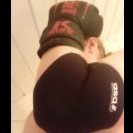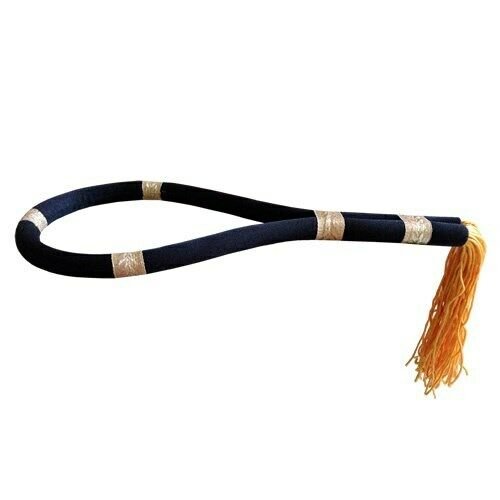
LengLeng
Member-
Posts
332 -
Joined
-
Last visited
-
Days Won
84
LengLeng last won the day on September 20 2024
LengLeng had the most liked content!
Profile Information
-
Gender
Female
-
Location
Yangon, Myanmar
Recent Profile Visitors
23,261 profile views
LengLeng's Achievements
-
Galib Fatre started following LengLeng
-
Depends on where you start, you don't want to get injured by adding too much, too soon. I switch between training/competing muay thai and lethwei. In lethwei they have some very intense leg training that helped me getting stronger legs (especially calves). At my current gym morning training starts with: 40min moderate pace jogging up and down a hill. Followed by either sprints (distance and repetition vary) or 3 rounds of frog jumps (bunny hops up the hill abt 100 rep each round) and a final round of uphill duck walks. Frog jumps can also be all kinds of directions (backwards, to the side etc). It always varies, but additional movements are added such as 3 rounds of 30 sec lunge jumping or bunny hop on top and in between and on top a tyre. 10 pike jumps are usually added too. Then kicks and knees in the air 3x30 sec. Or carrying or flipping a tyre up and down the hill. Usually it's about 1 hour of this stuff before we move into the gym doing bag work, pads and shadow. Afternoon usually begins with 4x5 min of tyre jumping (with and without light dumbells) each 30sec you go fast or pike jump on the tyre. Then there's usually some kind of plyometric leg movement added. Important to mention: there is a lot of focus on stretching and after the morning run each fighter stretches their legs and there's also a lot of assisted stretching. If i were you, I'd start with running and skipping then add some additional movements one by one if you feel it's needed. Tyre jumping is excellent for leg strength. But hard on your achilles tendons.
- 1 reply
-
- 2
-

-
Sorry for not answering in proper quotations, a quick input. I asked someone who documents lethwei about it: "I think a lot of people mistake the tattoos for being directly connected to lethwei. I've seen them in so many more contexts including theatre and other traditional sports from Burma." On martial arts as warfare I completely agree with you. It would be extremely odd if weapons were not included. Lethwei belongs to "thaing" though, one of Myanmar's traditional martial arts together with banshe which uses weapons. I understand Myanmar army has been trained in Thaing and historically there were differences between various people and parts of the country, lowlands and highlands. Could be a connection there? In lethwei what we see today I think difference is more in personal styles than ethnicity but I'm not 100% sure.
-
Yes, understood. It resonates a lot with evasive muay thai comparing it to that kind of warfare. What caught my attention is the stark contrast to lethwei which is very aggressive and forward moving. I have a limited view not speaking the language properly and lethwei teachers or students who do are very few. And Burmese people who do speak English but not too invested in martial arts have a hard time translating for me as the Burmese words used for various strikes and techniques are not self-explanatory. In addition, the sport is dominated by Karen, Mon and Kachin people with different languages. My teachers are Karen and their words for specific techniques are different than Bamar people's for example. But having trained with very traditional teachers and shared some clips with Sylvie, seems like traditional techniques I'm being taught are very similar to muay boran. So even though the sport today might seem brutal and aggressive there is something beneath what it has become known as "most brutal sports on the planet" (and promoted as by western fighters). I've been taught techniques that would pacify my opponent like stomping their foot with my heel, push my thumb into the neck of my opponent, heel kick back of opponents knee in the clinch. Things that are effective but doesn't cause too much damage. Which would resonate with your reflections on capture not kill. One thing though is that retreating is not viewed beautifully in traditional lethwei. And caused a bit of drama recently when two champions met in a title fight scored on points and one of the up and coming champions Thway Thit used a retreating style making champion Tun Tun Min chase him. Thway Thit won (very fairly he scored more) but his backing up caused debate. I wonder if it has to do with more recent history. Myanmar was colonised by Britain, occupied by Japan and since independence oppressed by the Myanmar armed forces with around 26 Ethnic Armed Organisations fighting for their independence (Karen being very successful example). During the recent coup people fought back. They wouldn't have it. They won't give up. Myanmar culture has a lot of stubbornness in it. Which I see reflected in lethwei. I might simplify your theories here by seeing how Thailand avoided colonisation, it evaded it very cleverly. I saw something you wrote about burning villages by the way, this is of course pre-Tatmadaw (Myanmar armed forces established in 1940s), but scorching earth policy is a permanent strategy of the Tatmadaw (they just keep burning down villages as im writing this). I wonder if there's a cultural root in that depicted in the illustrations? Above views are really just my own reflections and very anecdotal. I just find this region very interesting and I'm wondering how Khun Khmer and Lao martial arts fit in.
-
Yes I believe you are right. Leg tattoos are also associated with the Shan people (one of the hundreds of ethnic groups in Myanmar) so the illustrations could depict that. Face tattoos for example are closely related to the Chin people, and the Naga ppl have their distinctive tattoos. And since the leg tattoos are a sign of masculinity/becoming a man lethwei fighters might have picked it up since you see it among lethwei fighters of various ethnicities. .
-
I've been following this thread (very very interesting but takes time to understand) and have some reflections to come on myay thai fighting as avoidance of conflict. But first thing I noted of the Burmese warriors were the leg tattoos (as you point out) known as Htoe Kwin, deeply associated with lethwei. Mainly older lethwei fighters will wear them but some younger fighters have adopted the practice as well. There's a Wikipedia page on this, but the sources on htoe kwin I'm not too sure about, lots of misinterpreted, simplified info spread by Westerners due to lack of Burmese translation.
-
What to learn and when
LengLeng replied to Ikigaiwarrior's topic in Muay Thai Technique, Training and Fighting Questions
@Ikigaiwarriorthis is a very big question and I guess it would vary depending on which teacher you ask to teach you. One thing though, I really wish I had focused a lot more time on is rhythm and footwork. While learning a different martial arts discipline, this has become an issue for me as it's more difficult to adjust to a new stance as I haven't properly learned to _feel_ where my feet are and how to channel power through my body. I don't really feel where my feet are and I sometimes cross my legs or just keeping them way to narrow or way to far apart or back foot is not doing what it should. If that makes sense. Another big thing imho is shadow boxing and doing it purposefully. I would also say clinch and arm positioning in clinch. To really understand what is a dominant arm positioning and to feel what your opponent is about to do. In general, body awareness is to me very important and something I'm catching up on. To feel yourself and to feel your opponent.- 1 reply
-
- 1
-

-
Hey so since a year or so, I've felt my elbows becoming like cauliflower ears with cartilage building up. Haven't really had pain. But following a rough fight experience, I took a break from fight training and I'm experiencing elbow bursitis. Like a fluid filled sac attached to my elbows. I'm only doing western boxing training right now and my teachers treating it with warm water and massage. It's been almost a month and it's not getting better. Time to get it drained? 20230404_083926.mp4
-
This is exactly how I see it (mainly based on yours and Sylvies explanations and take on what is happening right now). And it's sad and so hard to explain to people. "They've turned fighting into what they believe fighting should be." Tbh...breaks my heart. I hope it will evolve differently and Sia Boats perspective will gain traction. It's like travelling nowadays....you barely see a difference between countries, same franchised shops and restaurants everywhere. Making it easier for the visitor...sacrificing local culture and traditions that can be hard to understand.
-
Thank you very much for this reply, Kevin. I had a sense this would be a logical explanation, but I could not put it into words. What you say about the GOATS is very interesting and comforting. Westerners have always had opinions about Thai children fighting as they have seen it through their own cultural lens. I guess now, everyone will view it that way if children will be encouraged to fight differently. And then...there will be need for protective gear etc that will increase costs/change who can train or increase the age of fighters (?).
-
First of all, apologies if this subject has been raised before, couldn't find it. I recently had a discussion with a Western coach teaching at a gym in Cambodia. His background as a fighter is Western Boxing but he has practiced muay thai and Khun Khmer and had a good approach on how to combine the sports. He himself had to stop fighting due to a head trauma that happened outside of fighting. We ended up talking about how boxers getting "chinny" ie not being able to take strikes to the head anymore and we were puzzled about muay thai fighters having so many fights but yet, seemed to avoid the notion of getting chinny. My take on it would be the focus on play sparring, smart fighting without the focus on strikes to the head. Yet, CTE and depression etc seems to be something plenty thai muay thai fighters face. But I would be interested to know if there's another explanation for this. Especially in the context of a more Western-focused style dominating some promotions in Thailand right now. Whether that might increase the risk of getting 'chinny'?
-
I went today. From Bearing BTS it's about 5 min motorbike ride. The two names are because it's a collaboration. Absolutely great training with people working there speaking English as well. 300 for one session and you get 3 pad rounds, clinch and sparring. Lovely atmosphere: 10/10 recommend. Just write to them on instagram through the link Emma posted. Shops and food close by.
-
I talked to one of the Western guys there, they are operational and happy to help students find cheap accommodation in the area. The politics involved in the name change I got no clue. I plan to check it out end of August. Eager to hear of any updates from you @emmaif you happen to visit. Arjarn Num, Arjarn Permsak or Arjan Tid no longer there but Kru Silathong seems to be.
-
My old gym Numponthep (where Satanmuenglek was for a long while) changed location during COVID. Not sure about the current training set up but they are operational in Bearing, BKK. When I was there it was heavily focused on clinching. Recent training between Silatong (great fighter) and Yuto (up and coming talented Japanese fighter) here https://fb.watch/dE4hOLft4u/
Footer title
This content can be configured within your theme settings in your ACP. You can add any HTML including images, paragraphs and lists.
Footer title
This content can be configured within your theme settings in your ACP. You can add any HTML including images, paragraphs and lists.
Footer title
This content can be configured within your theme settings in your ACP. You can add any HTML including images, paragraphs and lists.


